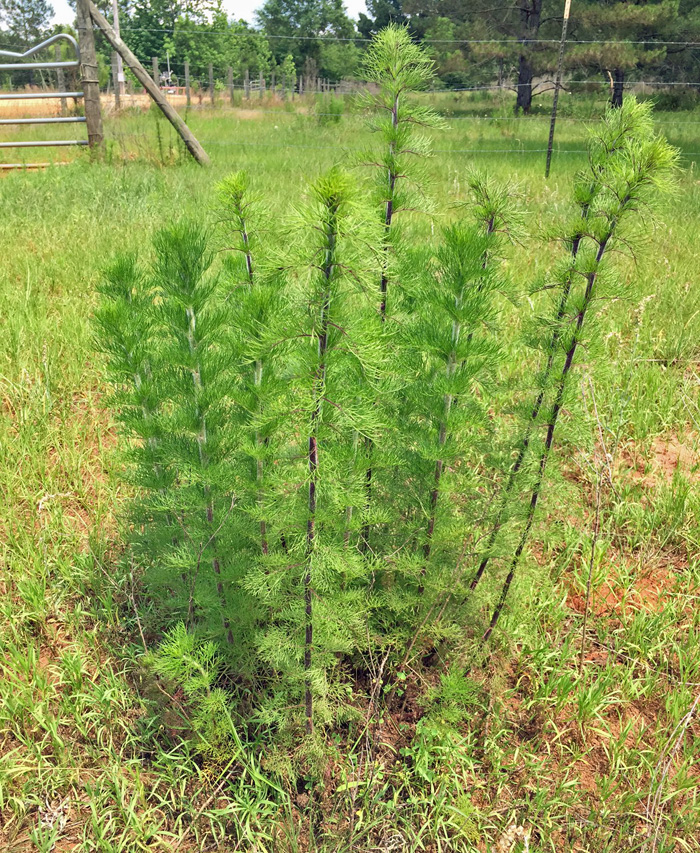Dogfennel is one of the most commonly occurring pasture weeds in Florida. University of Florida Weed Specialists, Brent. Sellers and Jay. Ferrel developed a publication specifically to address this troublesome pasture weed.
Dogfennel (Eupatorium capillifolium) is an aggressive native perennial found throughout much of the Southeast. Dogfennel is particularly troublesome in unimproved or overgrazed pastures where it adds to the decline of forage yield and quality. Although dogfennel is generally considered to only be unsightly, research has shown that significant bahiagrass yield loss will be observed when dogfennel infestations are not removed prior to July 1.
Cattle do not normally feed on dogfennel, but they may eat it when more suitable forages are lacking. However, the leaves contain low levels of the toxin tremitol, which causes dehydration when ingested by cattle.
Dogfennel Biology and Control
According to Sellers and Ferrel, a bahiagrass pasture with more than 50% coverage of dogfennel will experience a yield reduction of between 42%-74%, when compared to a bahiagrass pasture free of dogfennel. So not only are dogfennel plants unsightly in a pasture, but more importantly they are stealing water and nutrients from the forages that feed your livestock.
As with most pasture weeds, the most efficient control is achieved when the plants are small. Learn to identify dog fennel as it emerges from winter dormancy and begin your herbicide treatments in the spring. It is advisable, however, to avoid herbicide applications during periods of drought, when plants are wilting during the day, because it can reduce levels of control .
For more information on dogfennels and pasture weed control, download the following publications:
Dogfennel (Eupatorium capillifolium): Biology and Control
Weed Control in Pastures and Rangeland 2015
- 54th Annual Santa Rosa County Farm Tour Goes Virtual - December 11, 2020
- Video Tour of the 2020 Santa Rosa County Peanut Variety Trial - October 9, 2020
- Giant Salvinia – A Highly Invasive Aquatic Plant You Don’t Want Growing in Your Pond - May 29, 2020


